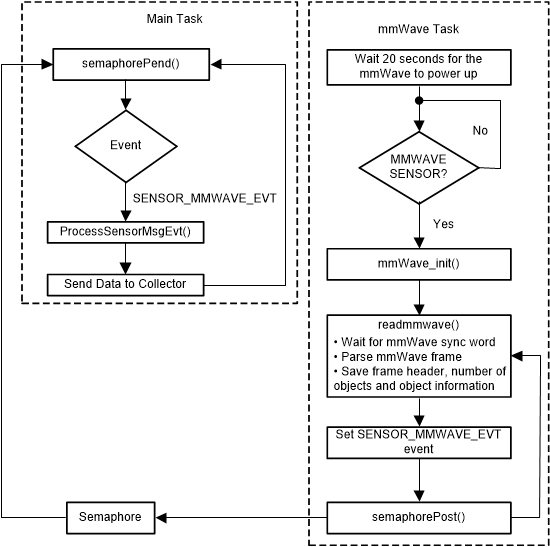TIDUED6B august 2018 – april 2023
- Description
- Resources
- Features
- Applications
- Design Images
- 1System Description
- 2System Overview
- 3Hardware, Software, Testing Requirements, and Test Results
- 4Design Files
- 5Software Files
- 6Related Documentation
- 7Trademarks
- 8About the Author
- 9Revision History
2.2.4.2 Sensor Node
Figure 2-10 shows the sensor node software flowchart.
 Figure 2-10 Sensor Node Software Flowchart
Figure 2-10 Sensor Node Software FlowchartEach sensor packet includes 4 bytes of the frame number, 4 bytes of the number of objects detected, and 12 bytes of tracking information for each object.
The tracking information for each object is 12 bytes which include 4 bytes track ID, 4 bytes target position in the X dimension, and 4 bytes target position in the Y dimension.
/*!
mmWave Object Field
*/
typedef struct _Smsgs_objtrackingfield_t
{
uint32_t tid;
uint32_t posx;
uint32_t posy;
} Smsgs_objtrackingfield_t;
/*!
mmWave Sensor Field
*/
typedef struct _Smsgs_mmwavesensorfield_t
{
/*! mmWave frame number */
uint32_t frame_number;
/*! Number of objects detected */
uint16_t num_objs;
/*! Tracking information for each object */
Smsgs_objtrackingfield_t objInfo[SMSGS_SENSOR_MMWAVE_MAX_OBJ];
} Smsgs_mmwaveSensorField_t;